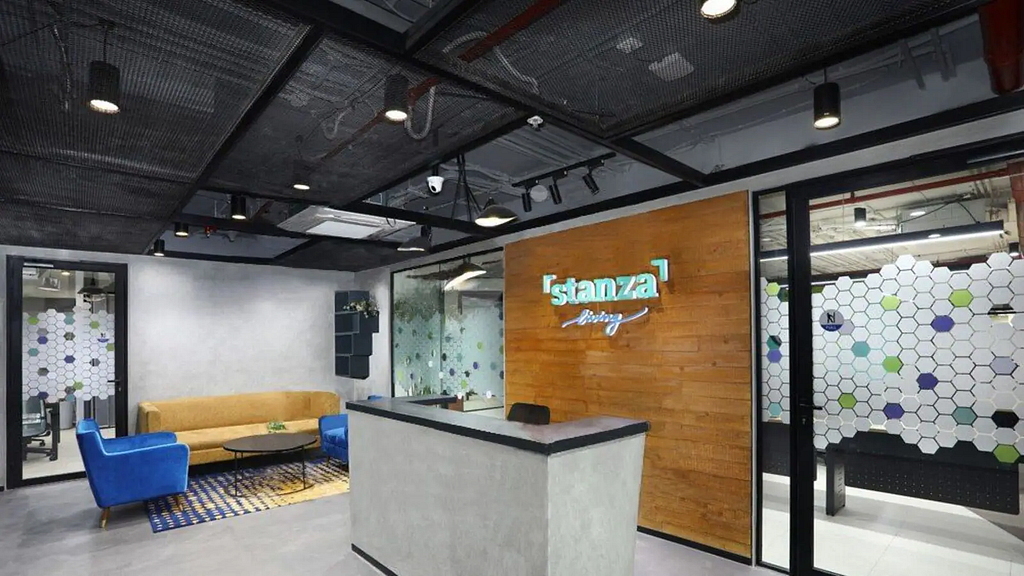
Opportunity for Private Sector Investment in Higher Education
By Riya Sinha & Payal Jain on 06.01.2023 | Higher Education Sector | LoEstro Advisors LLP
It is not news that the higher education sector has been starved of capital, despite advocacy for the need to improve infrastructure, support research and development, and update the curriculum.
Over the last two decades, we have witnessed a continued rise in the construction of higher education institutions (HEIs) through the philanthropic efforts of individuals, collective groups, and even support from big corporates. Additionally, HEIs also have access to CSR funding mandated for companies with a turnover of Rs 1,000 Cr. or more.
However, this funding hasn’t significantly contributed to improving the gross enrolment ratio (GER) in higher education, which remains well below the world average despite notable improvements in the past decade. The low GER hinders progress but also indicates significant untapped growth potential.
Disparity in Higher Ed GER: Global vs. India
The GER of Indian higher education currently stands at 27.4%, significantly below the global average of 42% as of the year 2022. The graph below illustrates this disparity. The low GER in Indian higher education can be attributed to various factors, including the absence of a sufficient number of quality institutions. Notably, no Indian HEI has ever made it to the top 100 world rankings in HEI further depriving it from attracting foreign students or Indian students who can afford to study abroad.
As of 2023, the age group of 18–24 constitutes ~12.6% (around 17.89 Cr or 178.9 Mn) of the 1.42 Bn total population. According to the AISHE 2021 report, higher ed enrolments are at 4.14 Cr (or 41.4 Mn), implying that ~13.7 Cr or 137 Mn of the population do not enroll in Indian HEIs. The government aims to achieve a 50% GER by 2035, which implies the addition of 34.1 Mn more students in higher ed. This ambitious goal requires the country to open ~100 universities every year over the next 11 years to accommodate the additional 34.1 Mn students.
Fig: Gross Enrolment Ratio of India vs. Global Average for the period (2017–2022)
Disparity in GER: Indian K-12 vs. Indian Higher Ed
A significant disparity exists within the country’s education sector. The GER for K-12 (primary and secondary education) surpasses the Higher Ed GER in India, with a mean difference ranging from 50 to 80 units approximately. This indicates a considerable portion of the population opting not to pursue higher education.
Fig: Gross Enrolment Ratio of Primary, Secondary vs. Higher Education in India for the period (2017–2022)
Low GER: Opportunity in Disguise
The low GER in higher ed is often perceived negatively, but it can be reframed as an opportunity for growth. This potential can be harnessed through two avenues:-
(1) establishment of more HEIs
(2) consolidation and expansion of existing HEIs
Inherent to Indian HEIs: Dearth in Funding & Weak Capital Corpus
The funding frailties faced by Indian HEIs are not hidden in the eyes of the world. Historically, the HEIs in India including State and Central Universities have depended on Grants in Aid from the government / UGC, alumni donations while the Private Universities on philanthropic or corporates backed fundings. Few examples are as follows:-
Fig: Examples of Individual & Collective Philanthropy in Indian Private University SpaceFig: Examples of Corporate backed Indian Private Universities
However, this is not sufficient to trigger growth in higher education, including the establishment of new-age HEIs or the expansion and revamping of current HEIs in the country. The potential in higher education cannot be fully realized or recognized solely through grants or philanthropic funding. Hence, this is where private investment can play a crucial role in:-
Reviving struggling HEIsFostering innovation and researchAcknowledging growing significance of Indian private institutions facing stagnation globallyExpanding renowned institutions of India without dilution of their legacyEstablishing research-oriented institutions focused on producing a world-class talent pool
Financing Challenges faced by the Indian HEIs
Indian HEIs encounter challenges stemming from their not-for-profit entity structure and regulatory constraints. These obstacles prevent them from raising funds for expansion, revamping, or innovation.
Breakdown of HEI structure in India
HEIs typically operate under the Sponsoring Body which may be:-
Trusts, registered under the Indian Trusts Act, 1882, or established under local State lawsSocieties, registered under the Societies Registration Act, 1860.Companies, incorporated under Section 8 of the Companies Act, 2013.
Education being a public good, none of the above structures can be involved in a transaction producing profits or in any way be lucrative, according to the regulations of the country.
Since all the assets sit in the Sponsoring Body, the HEI faces challenge in spending on development, maintenance, or growth. Since no returns can be obtained from this set-up, investors too are often sceptical about investing due to the non-quid pro quo nature of these transactions.
However, the landscape of higher education in India is undergoing a transformation in its legal framework, paving the way for a more investor-friendly environment. To comprehend this evolving legal framework for HEIs, let’s delve into the details:-
(1) The Sponsoring Body oversees all fundamental academic operations of the HEI. There are Management Companies or ManCos. around these HEIs that manage all non-core functions of HEI. The real estate infrastructure is then owned by a Property Company or PropCo. and is leased on a long-term basis to the operating Sponsoring Body.
(2) As funds and private investors seek opportunities in higher ed, the crucial element for private investments to take place is the comprehensive and secure nature of the underlying contracts between ManCo. / PropCo. and the HEI. Another essential consideration is ensuring a viable exit strategy. Globally, the trend of PE-backed platforms acquiring HEI across various regions is expected to extend to India, akin to developments observed in the K-12 sector.
Fig: Investible Entity StructureFig: Glance at Fund Flow between Entities
Private investment in Adjacent Segments
Adjacent segments, including K-12 as mentioned above, have attracted private investment due to a similar structure explained earlier. In September 2023, Kedaara Capital acquired a significant minority stake in a Bengaluru-based K-12 school operator — Orchids International School, from K12 Techno Services Pvt. Ltd. K-12 is also witnessing capital commitments from global investors. The Global Schools Foundation (GSF) has committed to injecting $550 Mn+ into India’s school education sector by 2026.
*Note: You can read more about K-12 transactions on our website under the M&A section, available here.
Financing done in Indian HEI till today
There are enough precedents in Indian Higher Ed as well that it can fund its corpus, from multiple other channels while being completely within the legal framework of the country, including the following: –
Debt financingEquity Investment in ManCo. (or OpCo.) and PropCo.Non-Core operations including Student HousingSale & Leaseback
1.Debt financing in HEI
One effective method for obtaining financial support involves obtaining loans from either private or public sources. These funds can be utilized to facilitate expansion or address operational requirements at HEI. Notably, banking debt presents compelling advantages in this context:
Education as Infrastructure: The classification of education as infrastructure enables HEIs to access long-term loans, providing a sustainable financing option for their development and growth.Specialized Financial Products: Banks and NBFCs offer specialized financial products with balloon repayments. This approach aligns with the expected cash flow growth in the education sector, providing a flexible and tailored repayment structure.LBOs: Traditional brick-and-mortar education institutions have strategically employed debt as a mechanism for executing LBOs. This financial strategy allows them to acquire other entities by utilizing borrowed funds, potentially enhancing their market presence and offerings.Cost-Effective Solution: The availability of loans at relatively lower interest rates makes debt financing an attractive choice, enabling these companies to meet their financial needs while maintaining financial stability.Fig: Few examples of debt financing by Indian HEIs
2.Equity Investment in HEI
One of the major precedents is the Global University Systems’ (GUS) acquisition of Pearl Academy & UPES from Laureate Education Inc. valued at US$145.6 Mn in May 2019. Similar to other HEIs, Pearl Academy and UPES were both managed by not-for-profit education societies. The societies collect fees from the enrolled students of institutes, but cannot share the profit generated because of their not-for-profit status. However, GUS acquired the economic interests in Pearl & UPES group entities that derived revenue for both.
Around the world, there are number of for-profit private HEIs that allow private investments. A lot of higher education assets got transacted across decades. Following are some indicative examples for the same: –
3.Investments in Non-Core Operations including Student Housing
Presently, the student relocations in India stand at 11 Mn and are expected to surge to 31 Mn by 2036. This growth presents a substantial opportunity for the emerging asset class of student housing, as highlighted by Colliers India. Outsourcing student housing operations are emerging in multiple formats including the following: –
Fig: Multiple models for outsourcing Student Housing in IndiaFig: Untapped Opportunity in Student Housing Sector
4.Sale & Leaseback
The financing method enables the brick-and-mortar educational group to sell some of its holdings (excluding the essential academic block, as required by AICTE and UGC regulations, which must remain under the trust operating the university/college). The assets available for sale may encompass infrastructure like sports facilities, hostels, and any other non-core assets within the university group.
Fig: Stages in Sale & Leaseback
Advent of Platform Aggregators in Higher Education
Apart from financing from various channels, a segue to access capital, similar to the K-12 ecosystem, is exploring strategic investors such as Cognita, ISP, GSF, and Lighthouse Learning who emerged as platform aggregators or consolidators for the K-12 ecosystem. A comparable trend is emerging in higher ed globally. Key players exploring opportunities in this trend include Oakley Capital, GUS, and Cintana Capital amongst others, are emerging as platform aggregators in Higher Ed.
Private Funding in Higher Ed: a way ahead?
The answer is — yes, the world of private funding offers a bunch of choices for HEIs to raise finance. It’s time for HEIs to roll up their sleeves and dive into the diverse funding options available. By doing this, they can not only manage their finances wisely but also set the stage for growth and sustainability, benefiting everyone involved — from the institutions themselves to the people they serve. Exploring these funding opportunities isn’t just a financial move; it’s a pathway to innovation, progress, and the ongoing improvement of higher education.
References:
1. (2022, December 16). The problem with higher education funding. Financial Express. https://www.financialexpress.com/opinion/the-problem-with-higher-education-funding/2917647/
2. Bansal, R. (2021, February 13). Student housing in India: a golden opportunity — Propacity blog. Propacity Blog. https://www.propacity.in/blog/student-housing-in-india/
3. 2023, July 19). Student housing demand in India to grow exponentially: Report. BusinessLine. https://www.thehindubusinessline.com/news/student-housing-demand-in-india-to-grow-exponentially-report/article67097715.ece
4. Student Housing — A new dawn in Indian real estate. (2017, July 17). https://www.jll.co.in/en/trends-and-insights/research/student-housing-a-new-dawn-in-indian-real-estate
5. Khan, S. (2021, December 22). India’s Co-living market expected to double by 2024, says Colliers Advisory. The Economic Times. https://economictimes.indiatimes.com/industry/services/property-/-cstruction/indias-co-living-market-expected-to-double-by-2024-says-colliers-advisory/articleshow/88424347.cms
6. Rao, V. R. (2023, May 28). India should rethink funding model for higher ed institutes. Times of India Blog. https://timesofindia.indiatimes.com/blogs/voices/india-should-rethink-funding-model-for-higher-ed-institutes/
7. LAUREATE EDUCATION, INC. (Form: 8-K, Received: 05/13/2019 09:06:52). (n.d.). https://content.edgar-online.com/ExternalLink/EDGAR/0001628280-19-006622.html?hash=c333addbec2f45f7e9b339b4fb9ef699e7db9f65d10861ade7bbfd0d54d4e15e&dest=CO-35866824XV6XSPA_HTM#CO-35866824XV6XSPA_HTM
8. Mehta, S. (2023, November 3). Narayana Group company raises ₹1,150 crore from Barclays, Axis Finance and Singapore sovereign fund GIC. The Economic Times. https://economictimes.indiatimes.com/industry/services/education/narayana-group-company-raises-1150-crore-from-barclays-axis-finance-and-singapore-sovereign-fund-gic/articleshow/104952215.cms
Opportunity for Private Sector Investment in Higher Education was originally published in LoEstro Advisors on Medium, where people are continuing the conversation by highlighting and responding to this story.

